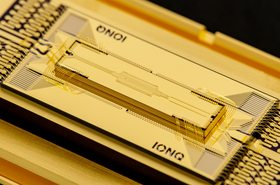The Stampede3 supercomputer is now operational at the Texas Advanced Computing Center (TACC) at the University of Texas in Austin.
The TACC first received the supercomputer in July last year.
The Stampede3, based on Dell servers and Intel CPUs and GPUs, brings an additional four petaflops of computing capability to TACC, making the two current Stampedes’ combined capability reach almost 10 petaflops.
The Stampede systems - Stampede2 (2017) and Stampede3 (2024) - are now combined to form the US National Science Foundation’s supercomputer system, called Access.
The system was funded by a $10 million award from the US National Science Foundation. Stampede3 will be accessible to the US open science community.
The Stampede3 features 560 Intel Xeon CPU Max Series processors with Dell PowerEdge XE9640 servers, adding nearly 63,000 cores.
The system also features a reintegration of 224 third-generation Intel Xeon Scalable processor nodes, added to Stampede2 in 2021, and more than 1,000 second-generation Intel Xeon Scalable processors, also from Stampede2.
Stampede3 also uses the new Cornelis Networks CN5000 Omni-Path 400Gbps network and TACC added an experimental Intel GPU hardware subsystem optimized for AI and machine learning.
More than 450 users ran half a million jobs during the pre-production phase. The system enables research ranging from biology data analysis to atomistic simulations.
Tommy Minyard, TACC’s director of advanced computing systems and principal investigator of the Stampede3 project, said: “During our pre-production period, users experienced capabilities such as an increase in speed-up for scientific applications due to better memory bandwidth per core provided by the Intel Xeon CPU Max processors.”
He added: “For the first time, we are using a storage system with no spinning disk - we are expecting a significant improvement for users in their I/O performance and reliability.”
Katie Antypas, office director for the National Science Foundation’s office of advanced cyberinfrastructure, said: “The new high-bandwidth memory node architecture as well as the all-flash file system will accelerate a wide range of applications, and I expect it will be in high demand by the user community.”
Stampede3 is the third iteration of the Stampede supercomputer since the original was built in 2012. Stampede2 launched in 2017, while the first Stampede was decommissioned in 2019, giving a chunk of the cluster to Stampede2 for repurposing. Since Stampede2’s deployment, more than 11,000 users working on over 3,000 funded projects have run more than 11 million simulations and data analysis jobs on the system.
The TACC is also home to the Frontera supercomputer, Stallion, and the Lonestar6 cluster which was deployed in 2021. The company recently announced plans for a new Nvidia-based cluster, dubbed Vista.
Last month, a hydrogen demonstration facility was launched in Texas to help power the TACC data center via a fuel cell.







